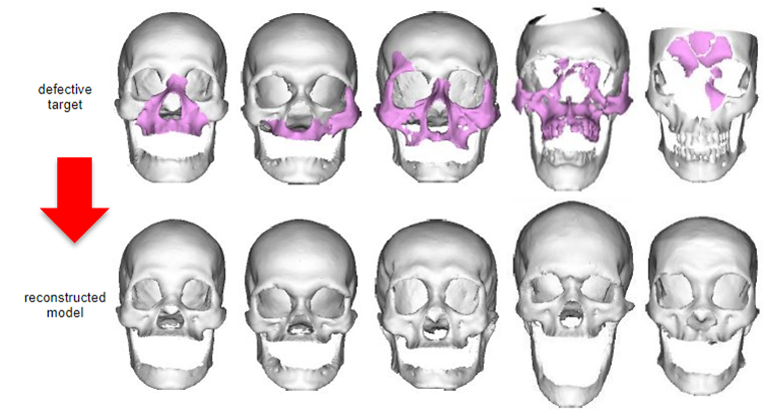
Rebuild, Restore, Reconstruct – An Improved Method for Craniomaxillo Facial Surgery
Opportunity
A novel software system for improved facial reconstruction
Patients suffering from skull deformities, which could be caused by congenital abnormalities, trauma or illness, require craniomaxillofacial surgery. These surgeries are extremely difficult because skull features (including facial structure) and the severity of the deformity vary considerably across individuals. Furthermore, several surgical procedures may be required, to correct issues with the head, skull, face and neck. Because of this, craniomaxillofacial surgeries must be well-planned in advance.
To do this, typically, surgeons use a series of computer-aided techniques to guide the reconstruction process. Reconstruction could be based on symmetry (by observing how the undamaged side of the face/skull appears) or using statistical models to generate a likely average appearance. Symmetry-based methods will not work well should both sides of the skull be defective and statistical models may not be relevant enough to suit the individual’s age, race or gender.
Furthermore, none of the currently-available computer systems can quickly and accurately generate a 3D image of a normal skull based on a deformed skull. Such a system would be instrumental in helping surgeons to visually reconstruct the undamaged skull and face rapidly and accurately.
Technology
NUS has developed a skull reconstruction algorithm (Flip-Avoiding Interpolating Surface) that can generate a 3D model of the defective skull, which is in turn used for the reconstruction of a model of the normal skull.
First, a CT scan is performed on the patient and CT images of the defective skull are used to generate a 3D model. The algorithm is then applied to the 3D model of the defective skull in order to generate a new 3D model of the normal skull. This algorithm produces minimal errors and little distortion of the skull surface because its iterative, interpolating calculations are not reliant on the original defective-skull model.
This novel method can create a separate normal skull model with greater efficiency and more accuracy than previous methods. It is also more user-friendly.

Experiment resutls



